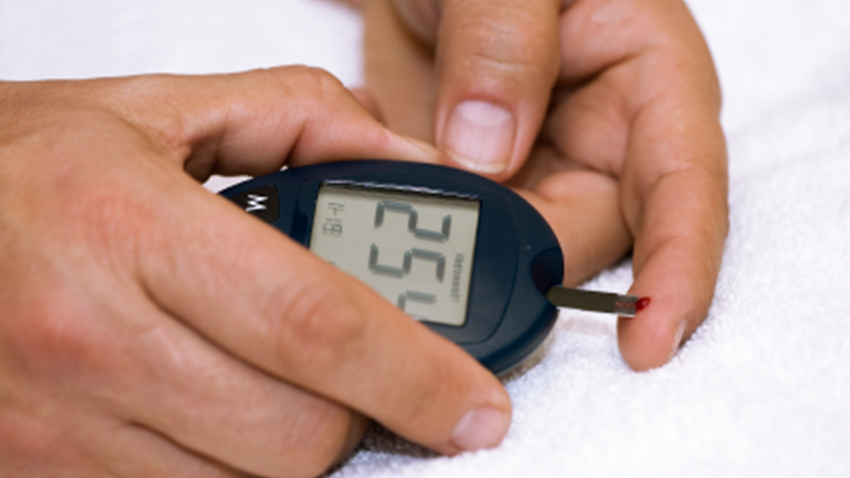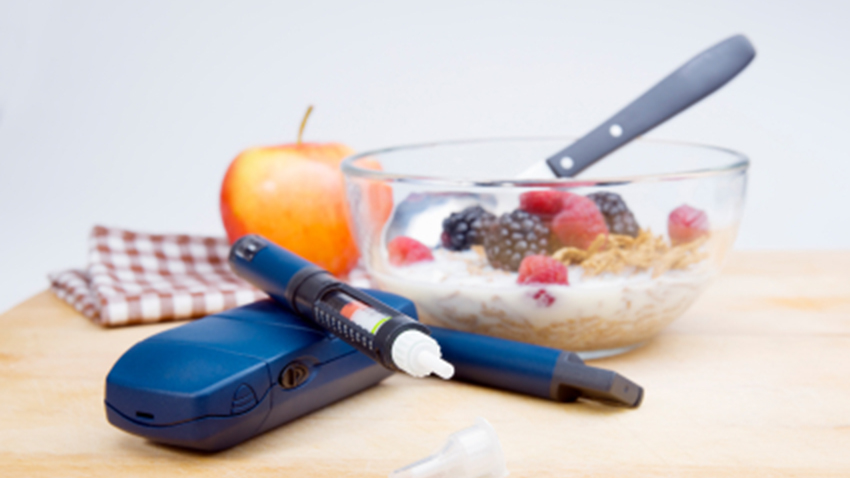Chronic Disease Education
Acute Condition Education
Working with your Family Physician
Working with Allied Care Providers
Postprandial Glucose

Knowledge is Power.
True/False - Quiz: Do You Understand Postprandial Glucose?
Information - Postprandial Glucose
 Postprandial means after a meal, and postprandial glucose is the elevation of glucose after we’ve eaten. When we digest food, it goes in the blood, and the first thing we have to do is to store it in our cells. Normally, after we eat our glucose goes up for an hour or two and then slowly comes back to where it’s normal because of the action of insulin. However, if people have diabetes and it’s not very well controlled, the glucose rises after the meal and can stay higher for a longer period of time. This is known as postprandial hyperglycemia.
Postprandial means after a meal, and postprandial glucose is the elevation of glucose after we’ve eaten. When we digest food, it goes in the blood, and the first thing we have to do is to store it in our cells. Normally, after we eat our glucose goes up for an hour or two and then slowly comes back to where it’s normal because of the action of insulin. However, if people have diabetes and it’s not very well controlled, the glucose rises after the meal and can stay higher for a longer period of time. This is known as postprandial hyperglycemia.
How Does Postprandial Glucose Work?
Glucose is a type of sugar we get from foods, and as it travels through the bloodstream to the cells, it’s called blood sugar or blood glucose. Glucose is found mainly in foods rich in carbohydrates, like fruit, bread, pasta and yogurt. The body uses glucose for energy. Insulin is a hormone in the body that moves the glucose from your blood into the cells. However, if you have type 1 or type 2 diabetes, you either can’t produce insulin or can’t use it properly, and glucose builds up in the blood. Blood glucose monitoring is an important part of any diabetes management plan. If you have diabetes, it’s important to check your blood sugar levels as prescribed by your doctor.
 Mealtime insulin is designed to help control the blood sugars after a person eats. They try to mimic the body’s natural response to sugar surges and last anywhere from 40 to 120 minutes. However, they do not completely match the body’s natural response to insulin, so there is still a chance postprandial hyperglycemia. High postprandial sugars can make you feel unwell, and over time, if the blood sugars are high on a consistent basis, you can develop diabetes-related complications involving your eyes, heart and kidneys. When someone with diabetes eats and glucose rises, insulin levels have to rise with the meal to tell the body to store the food. Diabetics need to coordinate the insulin rise with the food that’s entering the system. Usually, that’s done by giving rapid-acting insulin, which tries to reproduce this action of our normal insulin to control the glucose levels.
Mealtime insulin is designed to help control the blood sugars after a person eats. They try to mimic the body’s natural response to sugar surges and last anywhere from 40 to 120 minutes. However, they do not completely match the body’s natural response to insulin, so there is still a chance postprandial hyperglycemia. High postprandial sugars can make you feel unwell, and over time, if the blood sugars are high on a consistent basis, you can develop diabetes-related complications involving your eyes, heart and kidneys. When someone with diabetes eats and glucose rises, insulin levels have to rise with the meal to tell the body to store the food. Diabetics need to coordinate the insulin rise with the food that’s entering the system. Usually, that’s done by giving rapid-acting insulin, which tries to reproduce this action of our normal insulin to control the glucose levels.
Postprandial Glucose & A1C
 Postprandial glucose can influence A1C levels. The A1C is a measurement of the average blood sugar for the past three months or so. For people that have diabetes, their A1C target is usually less than or equal to seven percent. A1C levels in the blood are affected by glucose levels throughout the day, so it includes the effects of fasting glucose, but also the glucose levels after eating (the postprandial glucose levels). If either or both of these are high, the A1C will be higher, and when the A1C is higher that increases the risk of complications of diabetes. The newer insulins that are available tend to be faster acting, so they can be given closer to the meal, right at the beginning of the meal or even right after the meal to control postprandial glucose.
Postprandial glucose can influence A1C levels. The A1C is a measurement of the average blood sugar for the past three months or so. For people that have diabetes, their A1C target is usually less than or equal to seven percent. A1C levels in the blood are affected by glucose levels throughout the day, so it includes the effects of fasting glucose, but also the glucose levels after eating (the postprandial glucose levels). If either or both of these are high, the A1C will be higher, and when the A1C is higher that increases the risk of complications of diabetes. The newer insulins that are available tend to be faster acting, so they can be given closer to the meal, right at the beginning of the meal or even right after the meal to control postprandial glucose.
Talk to your endocrinologist if you'd like more information on postprandial glucose.
Visit HealthChoicesFirst.com for more videos and resources on diabetes.
Print this Action Plan and check off items that you want to discuss with your healthcare provider
-
Mealtime insulin is designed to help control the blood sugars after a person eats. They try to mimic the body’s natural response to sugar surges and last anywhere from 40 to 120 minutes.
-
High postprandial sugars can make you feel unwell, and over time, if the blood sugars are high on a consistent basis, you can develop diabetes-related complications involving your eyes, heart and kidneys.
-
Diabetics need to coordinate the insulin rise with the food that’s entering the system. Usually, that’s done by giving rapid-acting insulin, which tries to reproduce this action of our normal insulin to control the glucose levels.
-
Postprandial glucose can influence A1C levels. A1C levels in the blood are affected by glucose levels throughout the day, so it includes the effects of fasting glucose, but also the glucose levels after eating (the postprandial glucose levels).
-
The newer insulins that are available tend to be faster acting, so they can be given closer to the meal, right at the beginning of the meal or even right after the meal to control postprandial glucose.


